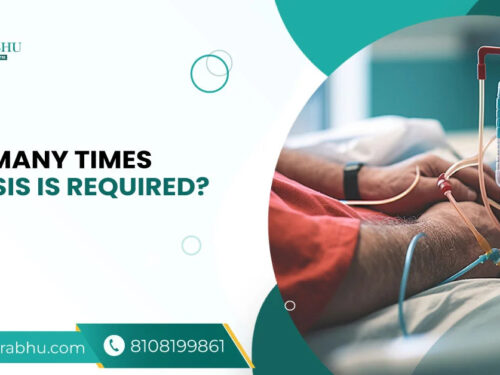
Dialysis
Dialysis is an artificial way of carrying out the functions of kidneys. People who have failed or damaged kidneys may have difficulty eliminating waste and unwanted water from the blood. With the help of dialysis treatment in Navi Mumbai these process can be done artificially. It is also known as Renal Replacement Therapy(RRT).
The kidney’s function is to regulate the body’s level of water and minerals and remove waste. But dialysis has some limitations such as the kidney can also secrete certain products that are important in metabolism whereas dialysis is not able to do this.
Who needs Dialysis?
A person whose kidneys only works 10-15% of their capability is someone who is in need of dialysis. According to a survey around 14% of adults aged above 30 have chronic kidney disease (CKD).
Kidneys filter around 120 to 150 quarts of blood each day-if they are healthy. If the kidneys are not filtering the blood properly the waste builds up in the blood that might cause coma and even death. With the help of dialysis, we can prevent the waste products in blood from reaching hazardous levels.
Types of Dialysis
There are variety of dialysis. But most common dialysis are majorly three.
- Intermittent haemodialysis
- Peritoneal dialysis
- Continuous renal replacement therapies (CRRT)
Let’s discuss each of them briefly to understand them.
INTERMITTENT HEMODIALYSIS
In this dialysis the blood circulates outside the body. It goes through a machine with special filters. In this we use a flexible tube known as catheter which is inserted into the vein through which the blood comes out. Just like the kidneys the filters also cleanse the blood removing the waste product from the blood. The filtered blood then returns to the patient through another catheter. This works like an artificial kidney.
To insert catheters surgery is done to enlarge a blood vessel usually in the arm making it possible for the catheter to enter easily.
This filtration or haemodialysis is usually done three times a week, for 3 to 4 hours a day, depending on the wellness of kidney.
Haemodialysis can be done at a special dialysis center or at home.
But if you are willing to have haemodialysis at home you must have caretaker who knows exactly what to do in dialysis and home must also be suitable for taking haemodialysis equipment.
- PERITONEAL DIALYSIS
Peritoneal dialysis is based on the principle of diffusion.
In this dialysis process a sterile dialysate solution rich in minerals and glucose us run through a tube into the peritoneal cavity, the abdominal body cavity that surrounds the intestine. It has a semi-permeable membrane, the peritoneal membrane.
Peritoneal dialysis is less efficient than haemodialysis. It takes longer periods, and it removes around the same amount of total waste product as haemodialysis.
As it can be done at home it is more convenient and comfortable giving patient more freedom and independence. It can also be done while travelling as it requires minimum of specialized equipment.
There are two main types of peritoneal dialysis
- Continuous ambulatory peritoneal dialysis (CAPD)
It requires no machinery and even the patient can do it. This happens every day, four or five times per day
- Continuous cyclic peritoneal dialysis (CCPD)
It uses a machine to exchange fluids. It is generally done every night, while the patient sleeps. It usually takes around 10-12 hours.
This is more convenient to elderly people, infants and children.
- CONTINUOUS RENAL REPLACEMENT DIALYSIS
This dialysis can be intermittent or continuous.
While a session of intermittent dialysis lasts for up to 6 hours, continuous renal replacement are designed for 24 hour use in an intensive care unit(ICU).
It can involve either interaction or diffusion. It is better tolerated than intermittent dialysis, because the process is slower. This leads to fewer complications.
With all these types of dialysis there are a few risks that comes along. A few of them are
- Hypotension
- Cramps
- Nausea
- Headache
- Back pain
- Chest pain
- Fever
- Chills
Symptoms of kidney failure
We humans can work on a single kidney even after we all have two kidneys. Symptoms may vary from people to people. Some of them may include:
- Fatigue
- Increasingly frequent need to urinate
- Erectile dysfunction
- Nausea
- Blood in urine
- Blood in semen
- Protein in blood
Doctor After diagnosing kidney failure we go for dialysis. But it also comes with a few side effects which are
- Muscle cramps
- Low blood pressure
- Sleep problems
- Depression
- Fluid overload
Kidney is an important part of human body, so any disease relating to kidney is very serious condition and should be taken very seriously. Once the kidneys fail, they are unlikely to recover but with the help of dialysis we can enhance our wellbeing and prolong life for up to 20 years or more.
- STAY HEALTHY, STAY SAFE!



